Thursday Reads: What Happened to Lennon Lacy?
Posted: April 16, 2015 Filed under: Crime, just because, morning reads, racism | Tags: Billie Holiday, Bladenville NC, FBI, Lennon Lacy, lynching, Michael Brown, Michelle Brimhall, police cover-up, Strange Fruit, Suicide, Trayvon Martin 31 CommentsGood Morning
As I was browsing the news this morning, I came across an article in the Daily Beast about an incident I have often wondered about–the death of teenager Lennon Lacy on August 28th of last year in the small town of Bladenville, North Carolina. On the morning of August 29, Lacy was found hanging from a swing set by a woman who called 911 to report “a suicide,” and asked if she should try to cut the person down. The dispatcher told her to go ahead. That was the beginning of either an unforgivably botched investigation or a police cover-up. (The photo above is of the swing set from which Lacy’s body was found hanging.)
The story broke in the midst of the Ferguson protests over the shooting of Michael Brown by police officer Darren Wilson, just one the suspicious deaths of young black men reported in the wake of the publicity about Brown’s death and the protests that followed. I’m ashamed to admit that I never searched for more information on the story until today.
Here’s the story that got me started; frankly the headline is a gross understatement. I’m just going to excerpt some of the problems with the “investigation” and then give you some more background on the case.
Cops Didn’t Collect Evidence on Hanging of Black Teen Lennon Lacy, by Justin Glawe
Coroner Hubert Kinlaw told Dr. Christena Roberts, a pathologist hired by the North Carolina NAACP to conduct her own investigation, that he was prevented from taking photos of the crime scene by police—and that cops even threatened to take away his camera.
Furthermore, Kinlaw told Roberts as part of her investigation that police at the scene “didn’t want an autopsy performed,” and that Kinlaw took it upon himself to order one with the local district attorney. (Kinlaw has turned down repeated requests for comment.)
However, an officer from the State Bureau of Investigation said in a report that no photographs were taken at the scene because the sole crime scene technician was at “another homicide.” (No other homicides could be found in news reports for that 24-hour period.) So the authorities don’t even agree why photographs weren’t taken.
The teenager’s hands weren’t bagged when his body reached the medical examiner, which is commonly done to preserve DNA evidence for retrieval by investigators.
The shoes that Lacy’s family members says weren’t his never made it to the autopsy table….
Radisch notes in her report the two belts delivered with Lacy’s body must have had been cut, because they didn’t seem long enough for Lacy to hang himself.
Radisch would only be left to speculate because the authorities didn’t measure the swing set where Lacy was found.
Well, someone could probably have gone to the crime scene and done that after the fact, but I guess no one bothered. Please read the rest of the article at the link. Glawe explains in detail why it would have been nearly impossible for Lacy to hang himself from the place where his body was found.
Fortunately, the FBI is investigating Lacy’s death, but the fact that police just called it a suicide and didn’t collect any evidence will severely hamper their efforts.
On December 19, 2014, The Washington Post reported on why the FBI had been been called in.
BLADENBORO, N.C. — Teresa Edwards was driving to Bo’s Food Store when she spotted the teenager walking along the dirt road. It was getting dark. He was alone. She recognized him as Lennon Lacy, one of her son’s best friends. She stopped to ask him if he needed a ride.
“No, ma’am,” she recalls him saying, “I’m just thinking.”
Lacy had plenty on his mind that night in August, and many would soon puzzle over what those thoughts might have been. The next morning, Lacy, who was black, was found hanging by two belts from a wooden swing set in a predominantly white trailer park. State authorities called it a suicide. His family, and many others here, wondered whether Lacy’s death was something else: a lynching.
It looked to them as if his body was on display. He didn’t leave a note. And Lacy had been dating an older white woman for months. He was found wearing unlaced white sneakers that his family said were not his, one of several unsettled issues. Last week, in a scene echoing the civil rights era in the South, the FBI was called in and the NAACP held a protest march over Lacy’s death….
People who knew Lacy don’t think he committed suicide. Others are unsure what to believe. But many here say the possibility that Lacy, a popular high school senior who moved easily between black and white social circles, was the victim of a racially motivated killing demands more investigation.
“We know suicide is possible,” said the Rev. Gregory Taylor, a black preacher in a town where there are two churches named First Baptist, their memberships split along racial lines. “It’s just hard to accept that a black youth would hang himself given the history of ‘strange fruit.’ The facts don’t add up.”
It was Thursday, Aug. 28, when Edwards, who is white, saw Lacy on the dirt road. She also doesn’t believe the teen killed himself.
Bladenboro has a long history of racism, and the Ku Klux Klan only stopped “parad[ing] through” the town in 1997. Moreover, Lacy’s body was found in an area that black children had long been warned to stay away from. Here’s a summary of some of that history from the Global Grind:
Here’s the truth — the statistic listed above marking the number of black bodies strung from trees in Bladenboro [“86 black people were lynched [in North Carolina] between 1882 and 1968”] is an image that is hard to let go.
And so is the racially charged climate of the rural town. In fact, Lacy’s neighbors, a white couple living in a trailer home right behind the Lacy family home, were instructed by police to remove a Confederate flag and a sign that read “Niggers keep out” from their front yard.
The Guardian asked the couple why they had put up the signs. Sykes said that it was his idea. “There were some kids who ganged up on our kid and I put some signs up.” Asked whether he now regretted doing so, he replied: “Yeah, I regret it now.”
Carla Hudson said she had begged her husband to take the signs down. “I told him he had to stop that. It wasn’t how I saw things – there’s not a racist bone in my body.”
In recent years, that tension hasn’t always been visible. According to The Guardian, Lacy “joined a multiracial youth group across town at the Galeed Baptist church where he went for weekly services and basketball ministry, and his friends were black and white, in almost equal measure.”
Though invisible in some facets of Lacy’s life, that tension is hard to ignore, especially considering how the teenager died.
Back to the WaPo article:
Although the police claimed Lacy was “depressed” about the death of a great uncle, his family said he was exited about playing in the first football game of the season. He had already laid out his uniform in anticipation. The family also said that at least one of the belts used to hang Lacy wasn’t his. Most mysterious of all, his brand new Air Jordans were missing and when Lacy was found his feet were jammed into white sneakers that had no laces and were way too small for his feet.
Claudia Lacy identified her son. A state bureau of investigation agent interviewed her at the scene. She said that her son had just buried his great-uncle but that he didn’t seem depressed. The medical examiner performed an autopsy, failing to find any signs of a struggle or fight. Lacy’s death was ruled a suicide. No mention was made of the white sneakers — they didn’t arrive with Lacy’s body for the autopsy. It’s unclear what happened to the shoes, although the state bureau of investigation collected them, Kinlaw said.
To Claudia Lacy, the investigation felt rushed.
“Why were they so quick to call it that?” she asked now. “Was it because of my race? Was it because of my social status?”
The is much more information at the link.
Lacy’s white girlfriend, who was 31, left town shortly after his death. According the The Daily Mail, she believed he was killed because of their relationship and she didn’t feel safe staying in “Crackertown.”
Speaking exclusively to DailyMail.com she said: ‘I believe Lennon was murdered. The police ruled his death as suicide but Lennon would never harm himself. He’s got too much love for life.’ …. speaking in the town where she has moved to get away from Bladenboro, Brimhall spoke of how they had planned a future together, despite the age gap, and how he had a life in front of him which showed he would not commit suicide.
Read much more at the Daily Mail link. Other media outlets have been unable to get in touch with the woman. Was she forced to leave town?
More quotes from Lacy’s family at MadameNoire:
[T]he family says suicide can’t be possible. Lacy didn’t have any issues that they know of when it comes to depression or mental illness over the years. And despite losing a great uncle he was close to right before his own death, Lacy’s mother says he grieved in the same way the rest of his family had, but carried on with his preparation for the football season.
“I know my son. The second I saw him I knew he couldn’t have done that to himself – it would have taken at least two men to do that to him.”
His brother, Pierre, agrees: “If my brother wanted to take his own life, I can’t understand why he would do it in such an exposed place. This feels more like he was put here as a public display – a taunting almost.”
Here’s the oft-quoted Guardian story. It’s excellent. Teenager’s mysterious death evokes painful imagery in North Carolina: ‘It’s in the DNA of America.’
I’ll end with a piece by Michael W. Waters at HuffingtonPost, The Life and Death of Lennon Lacy: Strange, Still.
The animus for Time Magazine’s “song of the 20th century” was a photograph of a Southern lynching. A Southern lynching would often draw an entire region of spectators together for a day of socializing. Small children were even present in the crowd, lifted high upon shoulder for an uninterrupted view of the day’s fatal proceedings. It was a strange, albeit frequent Southern spectacle, one that claimed many Black lives.
Given the frequency of this horrid practice, and the abundance of lynching photographs in circulation, many that doubled as postcards, it is unclear why one particular photograph troubled, then inspired Abel Meeropol, a New York English teacher and poet. Yet, it did. Unable to free his mind of this troubling image over several days, Meeropol sought consolation through his pen. As ink dried upon its canvas, its residuum formed words that have haunted generations, words etched into our collective memory as lyric by the incomparable Billie Holiday:
“Southern trees bear a strange fruit,
Blood on the leaves and blood at the root,
Black body swinging in the Southern breeze,
Strange fruit hanging from the poplar trees.”Now seventy-six years removed its initial recording, there is still cause to sing this sorrowful song.
On August 29, 2014, another Black body was added to the crowded annals of those swung by Southern breeze. In a cruel twist of irony, the body of seventeen year-old Lennon Lacy was not found swinging upon a Southern tree, but upon a Southern swing set – a fact only beginning the strangeness surrounding his death. Authorities in Bladenboro, North Carolina, abruptly ruled Lennon’s death a suicide, declaring that he was depressed, and closed the case in five days.
Still, many questions remain.
Yes, there are many questions that must be answered.
I recall that it took months before the murder of Trayvon Martin became high profile. It’s time the same thing happened with the Lennon Lacy story. This smells like a police cover up to me. The police in Bladenboro are known for stopping black teenagers who are walking at night. Could it be that an officer or officers stopped Lacy and accidentally killed him in a struggle–like what happened to Eric Garner–and then tried to make his death look like suicide?
What do you think?
As always, this is an open thread. Feel free to post links and discuss topics of your choice. But I hope you take a moment to think about and discuss what happened to Lennon Lacy.
Lazy Saturday Reads: Governor, Police, and Media Stoke Fears of Riots in Ferguson
Posted: November 15, 2014 Filed under: Civil Rights, Criminal Justice System, morning reads, racism, The Media SUCKS, U.S. Politics | Tags: 1965 Watts riots, Darren Wilson, Ferguson MO protests, Gov. Jay Nixon, grand jury, John Crawford III, Jon Belmar, Levar Jones, Mary Sanchez, Michael Brown, MIssouri National Guard, police shootings, Rodney King, Sean Groubert, slavery, Tom Jackson, Trayvon Martin, US Department of Justice 11 Comments 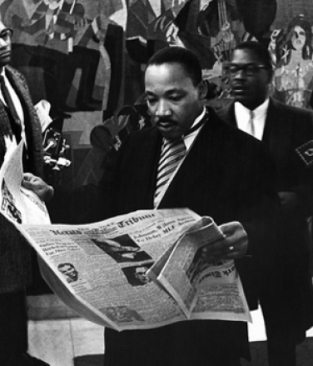 Good Afternoon!
Good Afternoon!
A Grand Jury decision is imminent in the Michael Brown shooting case in Ferguson, Missouri. For the past couple of weeks the media has been full of reports of how police departments in the St. Louis area are preparing for what they predict will be violent protests.
The general assumption is that Ferguson police officer, who killed Brown at about noon on August 9, will not be charged. The simple truth is that white police officer who kill black people are rarely charged and almost never convicted. Furthermore, the LA Times reports that law enforcement officers who kill citizens in Missouri are given “wide latitude.”
Missouri law provides wide latitude for police to use deadly force, particularly if the officer believes it’s necessary to protect his or her safety or the safety of others.
But that law might not shield Wilson. “If Michael Brown was trying to surrender at the time, that makes this defense not applicable,” Washington University law professor Peter Joy said. “So the question is: Was Michael Brown clearly trying to surrender at the time that the fatal gunshots were fired?”
Several witnesses who saw the shooting reported that Brown’s hands were in the air when Darren Wilson shot and killed him, but, as far as I can tell, most media sources recently have changed the narrative to the police version–not based on direct observation–in which Wilson supposedly feared for his life because the unarmed Brown “charged” at him after being hit with at least two bullets.
There is another investigation by the Justice Department into whether Darren Wilson violated Michael Brown’s civil rights, but
Joy said a federal indictment seemed unlikely, at least according to the publicly reported accounts of the shooting thus far.
“That would require that Officer Wilson intentionally planned or intentionally meant to violate the civil rights — that is, take the life of — Michael Brown because of his race,” Joy said.
The media narrative has gradually been revised since August, when we saw what were essentially police riots in which Ferguson and St. Louis police used military surplus equipment to control peaceful protesters and reporters and photographers who were covering events on the ground. Now we’re repeatedly being told that Brown was the aggressor, with the unwritten implication that he deserved to die. Back in August, some law enforcement officers threatened to kill protesters and even arrested numerous members of the media who were simply doing their jobs. But that’s all forgotten now. Now the corporate media appears to be fully behind the Ferguson and St. Louis police; and both the police and the media are preparing for what they expect–and apparently hope–will be violent and dangerous riots.
Since the Grand Jury decision may come very soon, I thought I’d gather the latest updates on this important story for today’s post. I’ll admit up front that I’m not an nonpartisan observer in this case.
First, the LA Times article I linked to above has a good summary of the two sides to the story of the shooting, Back Story: What happened in Michael Brown shooting in Ferguson, Mo.?
Also from the LA Times, a report of Missouri Governor Jay Nixon’s recent announcement about government preparations for what he apparently assumes will be riots, National Guard on call if Ferguson grand jury decision triggers violence.
The National Guard will be ready to assist law enforcement in Missouri if unrest erupts after a grand jury announces whether to indict a white police officer who fatally shot an unarmed black man in Ferguson, Gov. Jay Nixon announced Tuesday.
“Violence will not be tolerated,” Nixon said at a news conference with officials from the Missouri State Highway Patrol, St. Louis County police and St. Louis Metropolitan police. The governor said the agencies would form a unified command to deal with protests. “Residents and businesses of this region will be protected,” Nixon said….
Nixon said that the rights of peaceful protesters would be respected but that officials would have no tolerance for violent agitation. “Our dual pillars here are safety and speech,” Nixon said in the televised news conference from St. Louis. The National Guard, he said, would be available “when we determine it is necessary to support local law enforcement.”
Nixon added: “The world is watching.”
Nixon did not say whether there have been any efforts to diffuse anger on the part of local police officers or prevent more police overreactions to peaceful protests.
The story also quoted St. Louis police chief Jon Belmar.
“The community is on edge. … There is a large sense of anxiety out there. This is a little unprecedented,” St. Louis County Police Chief Jon Belmar told reporters in a televised news conference. Belmar added: “If you talk to chiefs around the country [as I have], they’re concerned and prepared for this to perhaps lap into their communities also.”
Gee, I wonder why? Could it be because police shootings of unarmed black men are so common in this country? Belmar also defended the use of military equipment to control protests.
Belmar defended the agency’s response by saying that such gear was necessary for his officers’ protection and pointed out that no protesters lost their lives during August’s demonstrations, which were occasionally marred by looting and gunshots. “My goodness, could we be that fortunate moving forward?” Belmar said of the absence of fatalities.
The St. Louis County Police Department has spent about $120,000 to replenish equipment such as shields, batons, tear gas and flex handcuffs after weeks of unrest in the aftermath of the shooting depleted supplies and damaged equipment.
Here are some recent examples of white policemen shooting unarmed black men:
The New Republic, A Dash Cam Didn’t Stop This White Officer From Shooting an Unarmed Black Man (fortunately, this officer was arrested and charged. Whether he’ll be convicted or not, we don’t know yet)
Mother Jones, August 13, 2014, 4 Unarmed Black Men Have Been Killed By Police in the Last Month.
Here’s piece on this subject by Washington Post columnist Jonathan Capehart, The terrifying police shootings of unarmed black men.
One of the burdens of being a black male is carrying the heavy weight of other people’s suspicions. One minute you’re going about your life, the next you could be pleading for it, if you’re lucky. That’s what happened to Trayvon Martin in February 2012 and Michael Brown last month. And two other recent shootings add further proof that no standard of conduct, it seems, is too good or too mundane to protect a black man’s life particularly from a police officer’s bullet.
John Crawford III was talking on his cell phone in the Beavercreek, Ohio, Wal-Mart and carrying an unloaded BB air rifle he picked up in the superstore on Aug. 5. “There is a gentleman walking around with a gun in the store,” Ronald Ritchie told the 911 operator. “Yeah, he’s, like, pointing at people….He’s looking around, waving it, waving it back and forth….He looked like he was trying to load it. I don’t know.” Fair warning: As the graphic video shows, Crawford was shot and killed by police. Ritchie has since changed his account of what happened.
You can watch the video at the link. Capehart also discusses the Brown case and the case in South Carolina (story linked above).
Levar Jones was pulled over for a seat-belt violation by now-former South Carolina state trooper Sean Groubert on Sept. 4. Thanks to the startling and graphic dashcam video we get to see every African American’s worst nightmare unfold in seconds….
Groubert asks Jones, “Can I see your license, please?” Jones, who was standing outside his car at the gas station convenience store, turned and reached inside to retrieve it. “Get out of the car! Get out of the car!” Groubert shouts before opening fire on Jones at point-blank range. After being hit in the hip, Jones can be seen moving backwards away from his car with his hands in the air as two more shots ring out.
Instead of using these recent cases to highlight and deal with the problem of police shootings of unarmed people, it seems that local and state governments like those in Missouri are simply doubling down on the people who protest them. I’m really concerned that all the talk of “riots” being inevitable in Ferguson is going to be a self-fulfilling prophecy.
Caitlin Dickson of The Daily Beast reports that at least one expert agrees with me: Riot Prep Could Fuel Ferguson Violence.
Despite a concerted police effort to quell demonstrations, protesters have carried on consistently and, for the most part, calmly since Brown’s death at the hands of police officer Darren Wilson this past August. But the impending grand jury decision on whether Wilson will be indicted in Brown’s death—and leaks of evidence suggesting he won’t—has law enforcement, residents, and business owners preparing for violence on the streets.
In addition to Missouri Governor Jay Nixon’s announcement on Tuesday that the Missouri State Highway Patrol, the St. Louis Metropolitan police, and the St. Louis County police will join forces (with the National Guard on standby) in handling demonstrations following the grand jury decision, almost every national news organization—from CNN to The New York Times, the Associated Press and Reuters—has reported that Ferguson residents and business owners have been taking matters into their own hands. Gun sales are up, local gun-shop owners told reporters. People like Dan McMullen, whose insurance agency is located near a spot where the few instances of vandalism and looting took place following Brown’s death, was quoted by both the New York Times and CNN as saying he’s stocking up on guns in case of a riot….
Despite Governor Nixon’s declarations that “violence will not be tolerated” and “residents and businesses of this region will be protected,” some experts wonder whether all the emphasis on preparedness—from the $120,000 spent by the St. Louis County Police on riot gear to the sudden demand for guns—may do more harm than good.
“I don’t think this is the way we should be thinking about what might happen,” American University professor Cathy Schneider told The Daily Beast. Instead, Schneider, who is an expert on social movements and racial tensions, argues that what we should be thinking about is, ‘how do we convince a community that the police will act to serve them, that the justice system will defend their interests, and that the verdict will be just?” [….]
“If one side is buying guns and preparing, what do you think the other people are doing, who think those guns are going to be used against them?” Schneider asked. Instead of acknowledging that Ferguson’s black community “is in pain and wondering whether justice will be done,” Schneider said, such intense preparation sends the message that “we think your community is dangerous and we’re armed and prepared to kill you.”
It also doesn’t help that Ferguson police chief Tom Jackson–who should have been fired by now–has announced that Darren Wilson, the man who killed Michael Brown, will be welcomed back to the local force if he isn’t indicted by the Grand Jury.
Here’s an excellent op-ed by Mary Sanchez of the Kansas City Star: The fire next time … may engulf Ferguson, Mo.
By every indication — from both the street and civic offices — Ferguson, Missouri is expected to blow.
The grand jury decision on whether a white police officer will be charged in the shooting death of an unarmed 18-year-old black man could come any day. Many are expecting no indictment of the officer, no criminal charges alleging that he went too far the day Michael Brown died.
If that’s the outcome, God help us all. Keeping the lid on the public reaction will be a gargantuan task.
Of course local leaders fed the outrage from the very beginning by trying to protect Darren Wilson and by leaving Michael Brown’s body lying exposed in the street for four hours.
Sanchez refers back to the riots in Los Angeles in 1965 as well as those in 1992 after the failure to indict police who beat Rodney King within an inch of his life. Why don’t government leaders deal with the root problems at work in these cases?
In Watts nearly 50 years ago the name was Marquette Frye, not Michael Brown. Frye, 21, was pulled over in a traffic stop, suspected of being drunk. When other family members arrived, a fight broke out with police. Word spread, alleging police had over-reacted.
For six days people rioted. There were 34 deaths, more than 1,000 people injured, $40 million in property damage and more than 1,000 buildings were destroyed.
In 1992, the person at the center was Rodney King. He’d led police on a high-speed car chase, fleeing after fearing that his probation would be revoked from a robbery conviction. When he finally was stopped, what happened next shocked the nation. The video of the officers assaulting King without mercy when they could have simply handcuffed him was played over and over on television.
When those officers weren’t indicted, the city erupted again. This time, 53 people died, more than 2,000 were injured, the property damage was pegged at $1 billion and another 1,000 buildings were destroyed.
In both cases, commissions were formed and good people went to work unraveling how one incident could ignite such violence. The underlying causes were found to be similar despite the nearly 30 years that had passed: the burdens of poor education, lack of jobs, poverty, racial tensions, and inferior housing and transportation.
Sanchez goes on to recommend changes that local and state governments will most likely either ignore or respond to with lip service.
We’ve seen over the past several years that virulent racism is alive and well in this country, and we simply are not dealing with it.
This nation was founded on the enslavement of black people, and despite the civil rights struggles of the 1960s, efforts to desegregate schools, and affirmative action, black people are still treated as second class citizens by many Americans. A number of states have even instituted voter ID laws that essentially act as poll taxes did in the Jim Crow era to keep black people from voting, and the Supreme Court has affirmed the right of states to do this.
We are now on the verge of another flashpoint in the history of race conflicts in our country–the possibility of violence following a failure to punish Darren Wilson for essentially ignoring the humanity of black teenager Michael Brown.
When will it end?
A few more reads to check out if you’re interested:
St. Louis Post-Dispatch, Protesters prepare for the worst in Ferguson.
Huffington Post, Beyond the Indictments: Black and Brown Deaths at the Hands of Police Are a Crisis Boiling Over.
Fellowship of Reconciliation, Ferguson Under Indictment.
Juan Williams at Fox News, Are liberal news outlets begging for a race riot in Ferguson?
Ben Swann, Michael Brown’s Parents Testify Before UN Committee Against Torture.
Michael Martinez at CNN, Ferguson case raises question: Where’s the data on officer-involved killings?
Christian Science Monitor, Ferguson verdict: Why St. Louis schools will know first.
AP via Boston Globe, Churches prepare for possible Ferguson unrest
What stories are you following today? Please post your thoughts and links in the comment thread, and have a great weekend.
Thursday Reads: Police Shootings in Ferguson and Beyond
Posted: August 21, 2014 Filed under: Crime, Criminal Justice System, morning reads, U.S. Politics | Tags: Bill O'Reilly, Captain Ron Johnson, Charles Johnson, Chief Tom Jackson, Darren Wilson, Dorian Johnson, Eric Holder, Ferguson MO, Fox News, George Zimmerman, Jeffrey Towe, Kajiene Powell, Little Green Footballs, Michael Brown, orbital blowout fracture, Piaget Crenshaw, police involved shootings, Sean Hannity, Trayvon Martin 43 CommentsGood Morning!
While we at Sky Dancing Blog–along with many other Americans–have been following the protests in Ferguson, Missouri, often feeling shocked and traumatized by the overt racism on display among law enforcement personnel there, Fox News and some right wing blogs have focused on supporting Darren Wilson, the Ferguson, Missouri, police officer who shot and killed 18-year-old Michael Brown at noon on Saturday, August 9, touching off the protests and the police crackdown that has continued for the past 12 days. In the process they have also made efforts to smear Brown and undermine witnesses who saw the shooting.
Police initially claimed that Brown had assaulted Wilson in his police car and tried to take the officer’s gun. But there were a number of witnesses who reported seeing Wilson chase after Brown while shooting his weapon after which Brown turned around with his hands up, trying to surrender.
On August 15, without informing Governor Nixon or the Captain Ron Johnson, who was in charge of security during the protests, Ferguson police chief Tom Jackson released a 19-page document naming Michael Brown as a suspect in an alleged robbery of $48 worth of cigarillos at a Ferguson convenience store. The alleged “strong-arm” robbery took place shortly before Brown was killed. The obvious implication was that Brown deserved to die for this. Jackson also appeared on The Sean Hannity Show to push this narrative.
Later Jackson was forced to admit that shooter Darren Wilson didn’t know about the alleged robbery, and therefore it had nothing to the shooting. Recently we learned that police didn’t even have the video showing the convenience story “robbery” until days after the shooting, and the video appeared to show that Brown had actually paid for the box of cigarillos he took with him.
Charles Johnson of Little Green Footballs has been documenting the latest right wing efforts to smear Brown and rehabilitate Wilson. On Tuesday, he linked to a post by Jim Hoft at Gateway Pundit citing anonymous sources that claimed Darren Wilson had suffered an “orbital blowout fracture to the eye socket” during the struggle with Michael Brown. Johnson writes:
The entire right wing universe (including Drudge Report) is now screaming about this post by, yes, the Dumbest Man on the Internet again, claiming that anonymous sources told him officer Darren Wilson suffered an “orbital blowout fracture to the eye socket” in a struggle with unarmed teenager Michael Brown [NOTE: I’m not going to link to Gateway Pundit; you can find the link at LGF].
It’s possible that someone did leak this information to Hoft, but I’ll remind my readers that Jim Hoft is probably the single most dishonest right wing blogger on the Internet as well as the dumbest, with a very long history of distorting facts and completely making stuff up to push his far right, often overtly racist agenda.
Johnson looked up the symptoms of an “orbital blowout fracture” and quoted the from description:
The most common symptoms are bruising, tenderness and swelling around the eye; redness of the eye; double vision, ordiplopia (seeing two images at the same time); numbness of the cheek, nose or teeth; nose bleeds (epistaxis) [See figure 1].
Symptoms that typically indicate a more serious injury are pain on eye movement, double vision, air under the skin around the eye, and numbness of the cheek/mouth/nose on the side of the injury. Severe trauma may cause facial bone fractures, injury to the eye itself, and injuries to the skull/brain.
You’d think someone who had just experienced such a serious eye injury would be in terrible pain and would have difficulty accurately shooting a gun. You also think he would need immediate medical attention; yet no ambulance was called for either Brown or Wilson, and Wilson was video taped walking near Brown’s body and show no signs of discomfort. Here’s the cell phone video taken by eyewitness Piaget Crenshaw.
Yesterday this story showed up on Fox News, with Bill O’Reilly reporting the “orbital blowout” claim; and today ABC News is reporting that Wilson suffered “a serious facial injury,” although they aren’t including the “orbital blowout fracture” claim. ABC news also has a video interview with an anonymous friend of Wilson’s. It’s odd that Wilson’s friends and supporters don’t want to give their names or show their faces while the eyewitnesses to the shooting have been upfront and straightforward about what they saw.
As for the facial injury, I guess we’ll have to wait and see if there is trial. At that point Wilson will need to produce medical records to prove he had a serious injury and had it promptly treated. Even then, we still won’t know how it happened. For all we know, he could have hit himself with his gun or on the car door. I can’t help but be reminded of George Zimmerman’s claims of serious injuries caused by Trayvon Martin–the injuries he didn’t bother to have a doctor examine until the next day. The bottom line is that even if Wilson actually was injured, Michael Brown should be alive and in jail now. Instead, Wilson chose to execute him on the spot.
The latest smear from right wing Wilson supporters is that Michael Brown’s friend Dorian Johnson has “recanted” his eyewitness version of the shooting. Once again, Charles Johnson responds, Did Michael Brown’s Friend Dorian Johnson “Recant” His Story? No, He Did Not.
Finally, a right wing site is raising money for Darren Wilson, and they have collected nearly $150,000 in the past three days.
The good news is that Ferguson was fairly calm yesterday after the visit from Attorney General Eric Holder. From The Washington Post, Eric H. Holder Jr., in Ferguson, shares painful memories of racism.
Attorney General Eric H. Holder Jr. arrived in the St. Louis area Wednesday to tour a community roiled by the police shooting of an unarmed African American teen — nine months after he had visited the same city to tout new initiatives aimed at keeping poor black men out of prison.
Long before the white-hot spotlight of the racially charged protests in the St. Louis suburb of Ferguson, Holder had been intent on reforming an American criminal justice system that he said imposed “shameful” disparities on minority communities. The death of 18-year-old Michael Brown on Aug. 9 has thrust Holder, 63, into the heart of a national debate over racial justice that he has aimed to make part of his legacy.
In meetings with residents, Holder shared his own stories of being pulled over and accosted by police while growing up in New York City — and of being skeptical of police even while serving as a federal prosecutor in Washington.
“I understand that mistrust. I am the attorney general of the United States. But I am also a black man,” Holder said during an appearance at Florissant Valley Community College. “I think about my time in Georgetown — a nice neighborhood of Washington — and I am running to a picture movie at about 8 o’clock at night. I am running with my cousin. Police car comes driving up, flashes his lights, yells ‘where you going? Hold it!’ I say, ‘Whoa, I’m going to a movie.’ ”
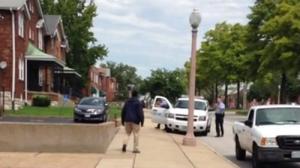
A man identified as Kajiene Powell, with an object in his right hand, approaches police in north St. Louis. Police say that the object was a knife and that he threatened officers before he was shot to death. (St. Louis Police Department)
Not far from the spot where Michael Brown died, another young black man was killed by St. Louis Metropolitan Police on Tuesday. A video of the shooting was released yesterday. From Huffington Post, St. Louis Police Release Video Of Kajieme Powell Killing That Appears At Odds With Their Story, by Ryan Grimm and Ashley Alman.
A convenience store owner called 911 on Tuesday when he suspected Powell stole drinks and donuts from his shop, according to a recording of the call. Another woman called to report Powell was acting erratically and had a knife in his pocket.
Two officers in a police SUV responded to the calls, the cell phone video shows. When the officers got out of their vehicle, Powell walked in their direction, yelling and telling them to shoot him already.
St. Louis Police Chief Sam Dotson said Tuesday that both of the officers opened fire on Powell when he came within a three or four feet of them holding a knife “in an overhand grip.”
But the newly released cell phone footage undermines the statement, showing Powell approaching the cops, but not coming as close as was reported, with his hands at his side. The officers began shooting within 15 seconds of their arrival, hitting Powell with a barrage of bullets.
Kajieme Powell apparently had long-term psychological problems. I’m not going to watch the video, but even in the still photo from the LA Times above, it looks to me as if police could have disarmed Powell and arrested him without using deadly force. The knife wasn’t raised as police claimed, and he certainly doesn’t appear to be within three feet of the officers.
A mentally disturbed man was killed by police in Sacramento, California on Monday. The Sacramento Bee reports:
Jeffrey Towe lived with delusions and profound mental illness, family members say. On Monday, he became the ninth person in the Sacramento region to die of police gunfire this year.
Towe, 53, fatally shot his own mother in 1990 in an incident that he said was a household accident. Two weeks ago, he delivered a collection of knives to his sister, telling her he couldn’t be trusted around them.
A Woodland police officer shot him dead Monday after authorities said Towe allegedly charged with a knife after officers arrived at his apartment building in response to a call about a disturbed, screaming man.
Towe’s death prompted local activists to converge Monday evening in Woodland, already motivated by the national story of the fatal police shooting of 18-year-old Michael Brown in Ferguson, Mo., and law enforcement response to protests there. They congregated downtown, blocking an intersection, chanting “Hands up! Don’t shoot!” – a slogan popularized in Ferguson.
In that incident, a California Highway Patrol officer shot and wounded a man who allegedly pulled a gun on officers in a drunken-driving stop. The suspect, who was hospitalized in critical but stable condition, was identified as Heath Austin Nunes, 38, of Lincoln.
The four-county Sacramento region, which includes Sacramento, Yolo, Placer and El Dorado counties, this year has nearly doubled the five fatal officer-involved shootings in 2013. In 2012, there were 16 fatal police shootings, including a record 10 by the Sacramento County Sheriff’s Department. Statewide, California averaged 100 annual deaths from police shootings from 2006 to 2011.
The United States has no database of police shootings. There is no standardized process by which officers log when they’ve discharged their weapons and why. There is no central infrastructure for handling that information and making it public. Researchers, confronted with the reality that there are over 17,000 law enforcement agencies in the country, aren’t even sure how you’d go about setting one up. No one is keeping track of how many American citizens are shot by their police. This is crazy. This is governmental malpractice on a national scale. We’d like your help in changing this.
Here, we’re going to take a cue from Jim Fisher, who as far as we can tell has compiled the most comprehensive set of data on police shootings in 2011. Fisher’s method was simple: He searched for any police-involved shooting every day for an entire year. By our lights, this is the best way to scrape this information—any time a police officer shoots and hits a citizen, it will almost certainly make a local news report, at least. However, this is a time-intensive process, and our manpower is limited. Having gathered some of the data, we can say it will take the few of us here a very long time to do this on our own. So, we’re setting up a public submission form and asking for help with this project.
Check it out if you’re interested.
So I’ve run out of space and time for this post. There’s plenty of other news, so I’ll post some more links in the comments. I hope you’ll do the same.
Tuesday Reads: Rachel and Trayvon, Reid Going Nuclear, Spy Stories, and Much More
Posted: July 16, 2013 Filed under: Civil Liberties, Civil Rights, Crime, Criminal Justice System, Foreign Affairs, Lebanon, morning reads, NSA, National Security Agency, Political Affective Disorder, racism, Russia, U.S. Politics | Tags: al Qaida, Alexei Nikitin, Amnesty International, Charles Ramsey, Edward Snowden, Filibuster, George Zimmerman, Harry Reid, Hezbollah, Human Rights Watch, Mitch McConnell, NSA, nuclear option, Piers Morgan, political asylum, Rachel Jeantel, Tanya Lokshina, Trayvon Martin, US Senate, Vladimir Putin 42 CommentsGood Morning!!
I’m not sure if it’s the heat or the depressing news, but I’m having a hard time getting going this morning.
We’re into our third heat wave of the summer, and I’m actually getting acclimated to 90 degree weather; but I suppose it still has an effect on my body and mind.
I’m also somewhat depressed about the Zimmerman verdict and by the often ignorant reactions I see on-line and on TV.
Rachel and Trayvon
One bright spot in the coverage for me was Rachel Jeantel’s interview with Piers Morgan last night. She was real and authentic, and Morgan pretty much stayed out of the way and let her talk. I think she made a real impression on him and the reaction from the live audience was very positive too. It was refreshing. IMO, it says a lot about Travon Martin’s character that he had a friend like Rachel. I’m going to post the whole interview here in case you missed it or you want to watch it again.
From Mediaite:
Asked about what Trayvon Martin was like as a friend, Jeantel described him as a “calm, chill, loving person” and said she never saw him get “aggressive” or “lose his temper.” She said that the defense’s attempts to portray Martin as a “thug” were unfounded and defended his relatively mild drug use. “Weed don’t make him go crazy,” she said, “it just makes him go hungry.”
Jeantel also responded to the massive mockery she received in social media for the way she speaks, explaining that she was born with an under-bite that has made it difficult for her to speak clearly. When Morgan asked if she’d been bullied for her condition, she simply responded, “Look at me,” to laughter from the studio audience.
Morgan attempted to get Jeantel to offer her opinion of defense attorney Don West, who many claimed was condescending towards her when she was on the stand. Jeantel shook her head, declining to say anything bad about the man given her “Christian” upbringing.
In the second part of his interview with Jeantel, Morgan turned to the “creepy-ass cracker” comment she made and the major impact it had on the tenor of the case. She explained that the term is actually spelled “cracka” and defined it as “people who are acting like they’re police.” She said that if Zimmerman had calmly approached Martin and introduced himself, her friend would have politely said what he was doing there and nothing more would have happened.
Unlike the juror, Jeantel did think Zimmerman was racially motivated. “It was racial,” she said. “Let’s be honest, racial. If Trayvon was white and he had a hoodie on, would that happen?”
I’d also like to recommend this piece by Robin D.G. Kelley at Counterpunch: The US v. Trayvon Martin.
In the aftermath of the Sandy Hook Elementary School massacre, Texas Congressman Louie Gohmert, Virginia Governor Bob McDonnell, Senator Rand Paul, Florida State Representative Dennis Baxley (also sponsor of his state’s Stand Your Ground law), along with a host of other Republicans, argued that had the teachers and administrators been armed, those twenty little kids whose lives Adam Lanza stole would be alive today. Of course, they were parroting the National Rifle Association’s talking points. The NRA and the American Legislative Exchange Council (ALEC), the conservative lobbying group responsible for drafting and pushing “Stand Your Ground” laws across the country, insist that an armed citizenry is the only effective defense against imminent threats, assailants, and predators.
But when George Zimmerman fatally shot Trayvon Martin, an unarmed, teenage pedestrian returning home one rainy February evening from a neighborhood convenience store, the NRA went mute. Neither NRA officials nor the pro-gun wing of the Republican Party argued that had Trayvon Martin been armed, he would be alive today. The basic facts are indisputable: Martin was on his way home when Zimmerman began to follow him—first in his SUV, and then on foot. Zimmerman told the police he had been following this “suspicious-looking” young man. Martin knew he was being followed and told his friend, Rachel Jeantel, that the man might be some kind of sexual predator. At some point, Martin and Zimmerman confronted each other, a fight ensued, and in the struggle Zimmerman shot and killed Martin.
Zimmerman pursued Martin. This is a fact. Martin could have run, I suppose, but every black man knows that unless you’re on a field, a track, or a basketball court, running is suspicious and could get you a bullet in the back. The other option was to ask this stranger what he was doing, but confrontations can also be dangerous—especially without witnesses and without a weapon besides a cell phone and his fists. Florida law did not require Martin to retreat, though it is not clear if he had tried to retreat. He did know he was in imminent danger.
Why didn’t Trayvon have a right to stand his ground? Why didn’t his fear for his safety matter? We need to answer these questions as a society. Please read the whole article if you can.
Read the rest of this entry »

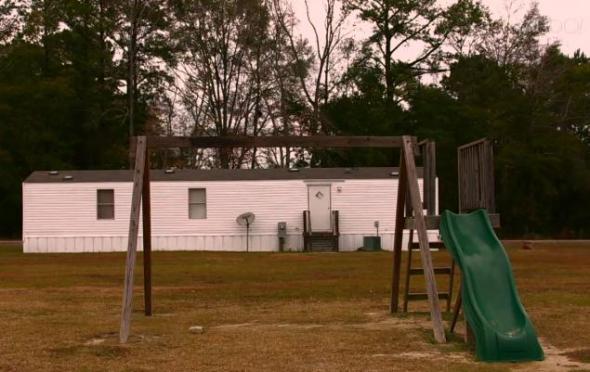
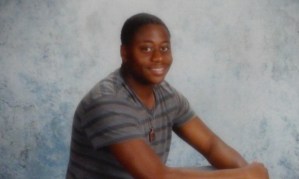



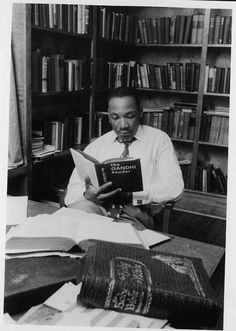






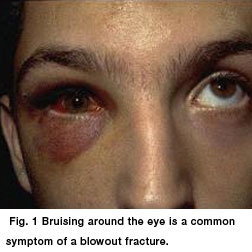






Recent Comments